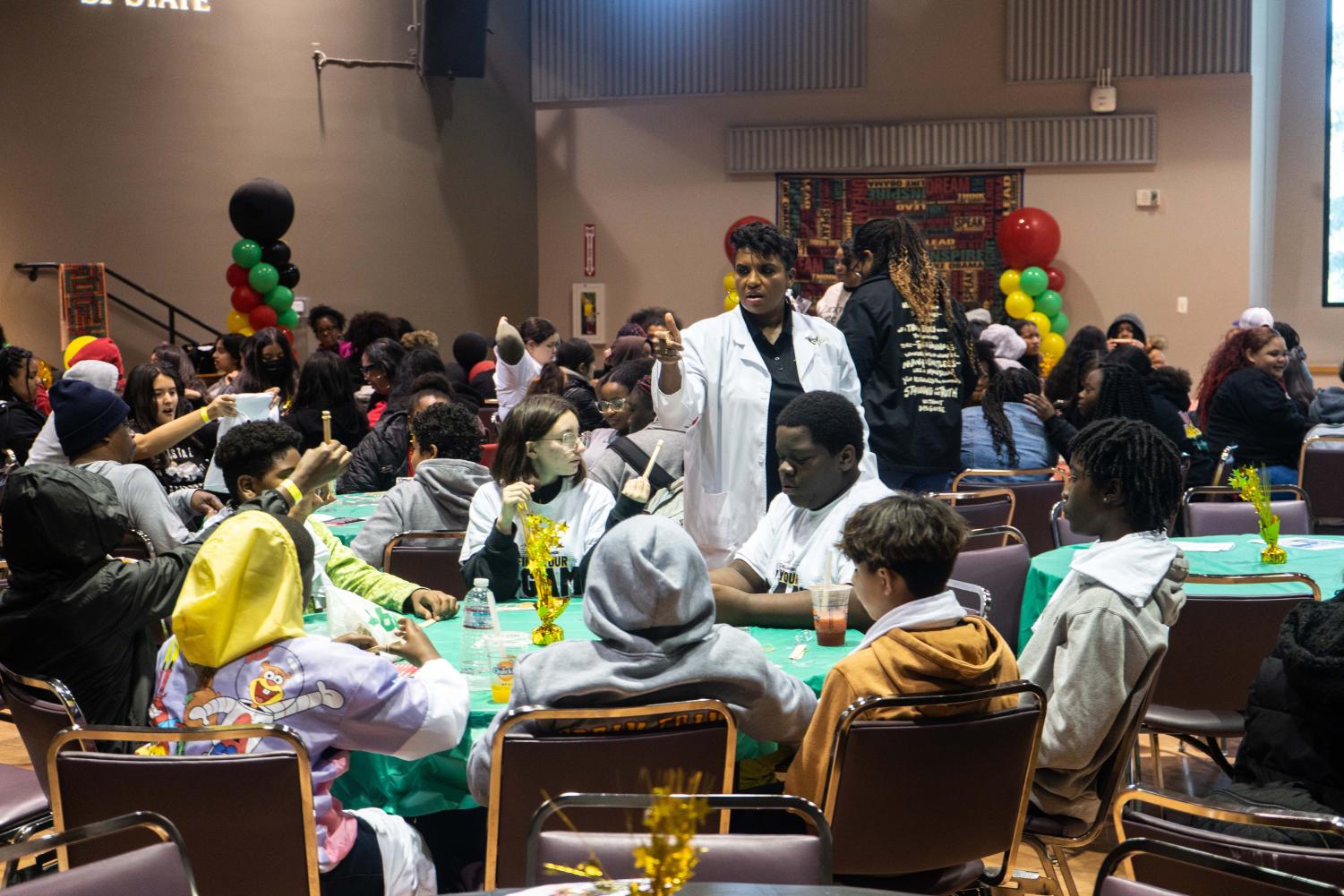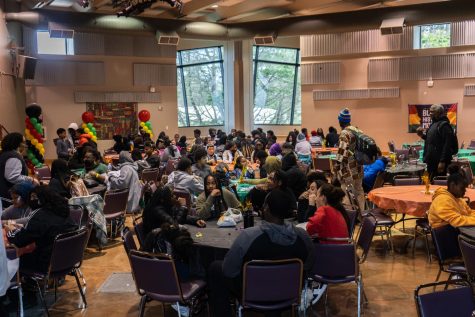



The event, which was hosted on the last day of Black History Month, was organized by Associated Students Culture and Social Justice Senior Director Shanice Robinson.
Mar 1, 2023
SF State hosted the annual Black History Month Conference in Jack Adams Hall on Tuesday. The event was organized by Associated Students Culture and Social Justice Senior Director Shanice Robinson and advisor Tachelle Herron-Lane in collaboration with Black Students California United CEO Angie Barfield.
The event’s goal was to educate middle school students from Bay Area school districts about higher education and the historic Black presence at SF State’s campus in hopes to create a pipeline into college for Black students. Around 250 students attended the event.
The conference started with the keynote speaker Dr. Valerie Bennett, assistant professor at Clark Atlanta University, who graduated from Vanderbilt University with a degree in mechanical engineering and received her master’s degree and doctorate from the Georgia Institute of Technology.
Dr. Bennett shared what her experience was like being a Black woman in the field of STEM. She was the only Black woman in her classes and was not approached for group projects initially; however, she excelled through her work and developed a repertoire with her peers.
Her mentor, Carolyn Williams, influenced her to join student organizations such as the Society of Engineers and the National Society of Black Engineers. She attributes her leadership skills to her experience in being involved in those organizations.

Dr. Bennett spoke about her love for creation through building, drawing and taking things apart as well as how a mechanical drawing class in eighth grade got her interested in STEM. She said that her family and teachers encouraged her early on for STEM, and that curiosity begins the journey into careers and professions.
After the speech, there were workshops to put the scientific process into practice by building a catapult launcher. There was a presentation in the Rosa Parks Conference Room that highlighted the historic Black presence at SF State’s campus.
The presentation went over prominent alumni such as Willie Lewis Brown Jr., San Francisco’s first Black mayor, and the presence of multiple Black student organizations on campus, such as the Black Student Union and the Black Unity Center.
According to the Integrated Postsecondary Education Data System, the number of Black students has decreased by 60% at the top 101 public colleges and universities in the country. The lack of representation on college campuses is one of the biggest factors that deter young Black students from pursuing an education past high school.
Robinson organized the event to highlight the Black student population on campus and hopes that bringing BSCU to campus will allow BSU to partner with them for more events that amplify Black leadership and representation.
“We don’t have a large Black population on campus and maybe it’s because we’re not doing enough outreach to those communities,” Robinson said. “It’s important for me to do that [outreach] so that they know we’re here, even if we don’t have a large population.”
According to the National Center for Education Statistics, the graduation rate for Black students in STEM was 12% from 2015 to 2016 and went down to 9% from 2019 to 2020. Dr. Bennett highlighted this statistic during her speech to encourage Black students to join STEM. She attributed the decline to students not knowing enough about the field of STEM and its benefits.
Barfield co-founded the BSCU in 2016 to create an organization that helps cultivate youth voice and leadership. She said that many Black students don’t envision going to college campuses and that these events are to cultivate their leadership, give them exposure and raise cultural awareness.
“These events work with institutional partners like community colleges, CSUs and UCs to put on these events on campus that usually involves speaking to someone from campus about admissions and requirements,” Barfield said. “It’s something that we feel will encourage them into going on the journey and expose them to fields like science and math which they would otherwise shy away from.”
Editor’s Note: This article has been updated to correct a source’s title

